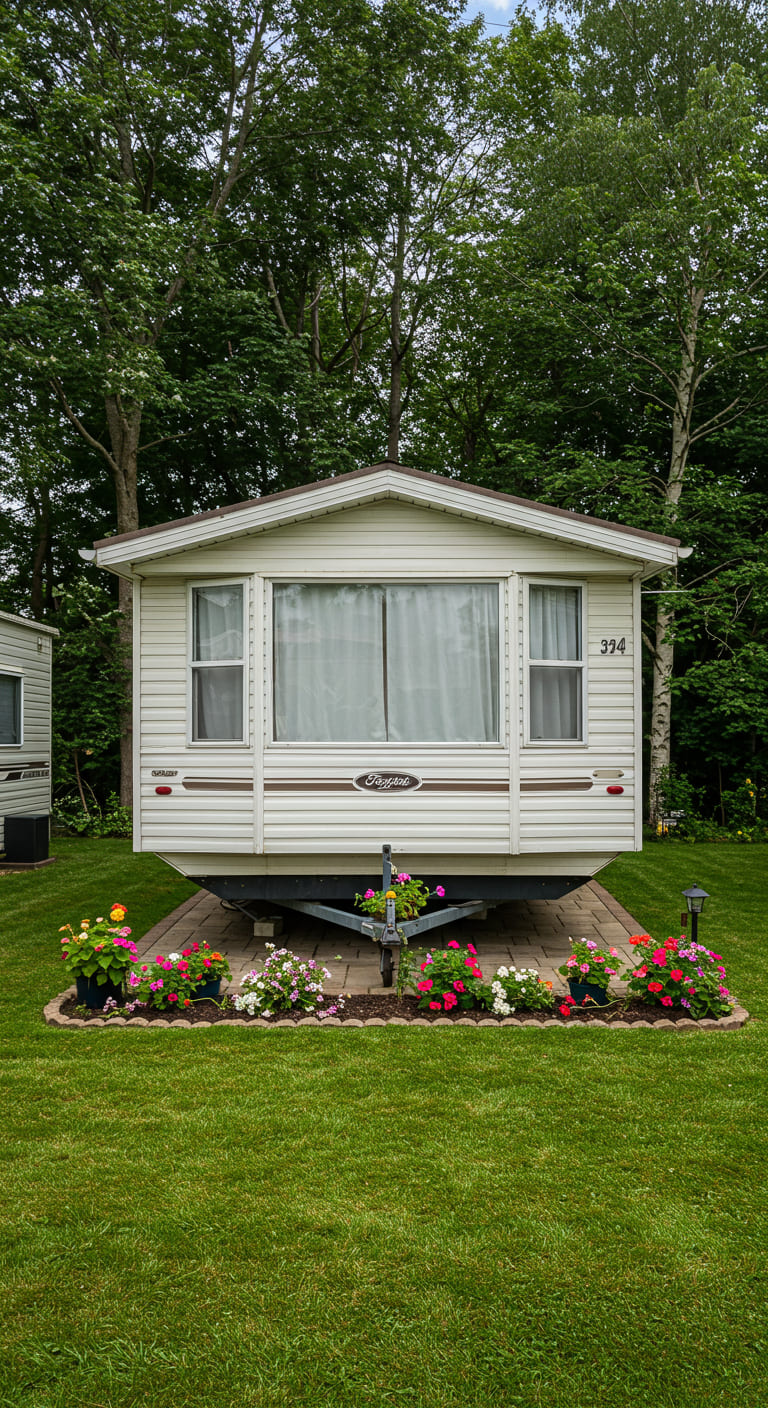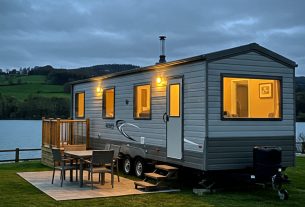As I stand on the precipice of a new adventure, the thought of placing a mobile home on my very own lot filled me with excitement and a hint of trepidation. The idea of owning a space that I can call my own, where I can build memories, and create a sense of community, is undeniably appealing. However, before diving into this venture, I needed to understand the regulations and requirements surrounding mobile home placement. If you’re considering a similar journey, join me as we explore the ins and outs of placing a mobile home on a lot.
Understanding Mobile Homes
Mobile homes, also known as manufactured homes, have come a long way from the stigmas of the past. Today, they offer a cost-effective and flexible housing solution. According to the U.S. Census Bureau, in 2020, around 6.7% of all housing units in the United States were mobile homes. Their affordability and mobility are attractive, but what do you need to consider when placing one on a lot?
Types of Mobile Homes
- Single-Wide: Typically 18 feet wide or less, single-wide homes are the most affordable option and are ideal for smaller lots.
- Double-Wide: These homes are at least 20 feet wide and offer more space, making them suitable for families or those who need extra room.
- Triple-Wide: Larger than double-wides, these homes provide extensive living space and are often more luxurious.
Can You Place a Mobile Home on a Lot? The Basics
The short answer is yes, but the process involves several considerations. As I delved into the details, I discovered a myriad of factors that dictate whether you can successfully place a mobile home on a lot. Here are the key elements to consider:
Local Zoning Laws
First and foremost, zoning laws play a crucial role in determining where you can place a mobile home. Each municipality has different regulations regarding land use, so it’s essential to research local zoning laws. I found that many areas have specific zones designated for manufactured housing, while others may prohibit them altogether. Here’s what I learned:
- Check with your local zoning office to understand the regulations.
- Some areas may require a special permit to place a mobile home.
- Restrictions may vary based on the size and type of mobile home.
Land Ownership
Next, I had to consider whether I owned the land or if I would be renting it. Owning the lot gives me more freedom, but renting can come with its own set of guidelines. Here’s what I found:
- If you own the land, you have more control over the installation process.
- Renting a lot in a mobile home park may come with specific rules from the park management.
- Be sure to read any lease agreements carefully to understand your rights and responsibilities.
Building Codes and Permits
In addition to zoning laws, I learned that building codes and permits are essential for mobile home installation. These codes ensure that the home meets safety standards. Here’s what I discovered:
- Contact your local building department to inquire about necessary permits.
- Some areas may require inspections before and after installation.
- Ensure the home is compliant with the HUD (U.S. Department of Housing and Urban Development) standards.
Utilities and Infrastructure
Before placing a mobile home on a lot, I had to consider the availability of utilities like water, electricity, and sewage. Here’s what I learned about connecting a mobile home to essential services:
- Verify that the lot has access to necessary utilities.
- Check if there are any additional costs for connecting services.
- Investigate the feasibility of installing septic systems if public sewage is unavailable.
Getting Started: The Steps to Place a Mobile Home on a Lot
Once I understood the rules and regulations, I was ready to take the next steps toward placing my mobile home on a lot. Here’s a step-by-step guide to help you through the process:
Step 1: Research
The first step in my journey was thorough research. I explored local zoning laws, building codes, and potential lots available for purchase or rent. I reached out to local government offices and searched online for information specific to my area. Here’s what I recommend:
- Visit local government websites for zoning maps and regulations.
- Join local community forums or social media groups to gather insights from fellow mobile home enthusiasts.
- Consult with a real estate agent familiar with mobile home properties.
Step 2: Find the Right Lot
Finding the right lot was crucial. I considered factors such as location, size, and access to utilities. I learned that working with a real estate agent could make this process smoother. Here are some tips:
- Look for lots in areas with favorable zoning laws for mobile homes.
- Consider whether you want a rural or suburban setting.
- Evaluate the size of the lot to ensure it fits your mobile home comfortably.
Step 3: Secure Financing
Financing a mobile home and land can be different from traditional home loans. I researched various financing options and found that some lenders specialize in mobile home loans. Here’s what I found helpful:
- Explore different loan options, including personal loans and FHA loans.
- Consider the total cost, including land, home, and installation expenses.
- Get pre-approved for financing to streamline the process.
Step 4: Obtain Permits
Once I secured the lot and financing, I focused on obtaining the necessary permits. This step was vital in ensuring compliance with local regulations. Here’s what I did:
- Contacted the local zoning office to apply for permits.
- Gathered all required documentation, including proof of ownership and building plans.
- Scheduled inspections as required by local building codes.
Step 5: Prepare the Lot
Preparing the lot for installation was exciting yet challenging. I learned that proper preparation ensures a stable foundation for the mobile home. Here’s how I tackled this step:
- Cleared the lot of any debris and vegetation.
- Ensured proper drainage to prevent flooding.
- Considered hiring a contractor for foundation installation if needed.
Step 6: Install the Mobile Home
Now came the moment I had been waiting for—installing the mobile home. I realized that hiring professionals for this step was often the best choice. Here’s what I learned:
- Choose a reputable mobile home installation company.
- Ensure the installation meets local codes and regulations.
- Schedule inspections after installation to confirm compliance.
Step 7: Connect Utilities
Once the mobile home was installed, it was time to connect utilities. This step was crucial for making the home livable. Here’s what I did:
- Contacted utility companies to schedule connections for water, electricity, and sewage.
- Ensured that all connections met local standards.
- Considered installing renewable energy sources, like solar panels, for sustainability.
Living in a Mobile Home: What to Expect
Now that I had my mobile home set up, I was eager to embrace this new lifestyle. Living in a mobile home comes with its unique advantages and challenges. Here’s what I discovered:
Advantages
- Affordability: Mobile homes are often much cheaper than traditional houses.
- Flexibility: The ability to relocate the home if needed.
- Community: Many mobile home parks foster a strong sense of community.
Challenges
- Depreciation: Unlike traditional homes, mobile homes can depreciate over time.
- Limited Financing Options: Some lenders may be hesitant to finance mobile homes.
- Space Constraints: Mobile homes typically offer less space than traditional homes.
Case Studies: Successful Mobile Home Placements
To understand the impact of placing a mobile home on a lot, I researched several case studies of individuals who successfully navigated this journey. Here are a few inspiring stories:
Case Study 1: The Smith Family
The Smith family purchased a plot of land in a rural area, where zoning laws were favorable for mobile homes. They worked with local authorities to secure permits and connected utilities efficiently. Their home is now a thriving hub for family gatherings, showcasing the potential of mobile home living.
Case Study 2: Sarah’s Sustainable Home
Sarah, an eco-conscious individual, placed a mobile home on a lot with a focus on sustainability. She installed solar panels and a rainwater collection system, reducing her environmental impact. Sarah’s commitment to sustainability inspired her community and encouraged others to consider eco-friendly living options.
Frequently Asked Questions
1. How much does it cost to place a mobile home on a lot?
The cost varies significantly depending on location, the size of the home, and additional expenses such as permits and utilities. On average, costs can range from $10,000 to $100,000.
2. Can I finance a mobile home on a lot?
Yes, various financing options are available, including personal loans, FHA loans, and specialized mobile home loans. It’s essential to shop around for the best rates.
3. What are the maintenance requirements for a mobile home?
Mobile homes require regular maintenance similar to traditional homes. This includes checking for leaks, maintaining the exterior, and ensuring that utilities are functioning correctly.
4. Are mobile homes safe?
Modern mobile homes are built to meet safety standards set by the HUD. However, proper installation and regular maintenance are crucial for ensuring safety.
5. How do I find a suitable lot for my mobile home?
Research local zoning laws, consult real estate agents, and explore online listings to find a lot that meets your needs and complies with regulations.
Conclusion
Placing a mobile home on a lot can be an exhilarating journey filled with opportunities and challenges. By understanding the rules and regulations, conducting thorough research, and following structured steps, I was able to embark on this new chapter in my life. The flexibility, affordability, and sense of community that mobile home living offers are truly rewarding. If you’re considering this path, I encourage you to take the plunge and create a space that reflects your dreams and aspirations.
If you found this article helpful, consider signing up for our newsletter for more insights and tips on mobile home living. Don’t forget to share this article with friends and on social media! Together, let’s inspire more people to explore the possibilities of mobile home ownership.
EF ECOFLOW Portable Power Station DELTA 2, 1024Wh LiFePO4 (LFP) Battery, 1800W AC/100W USB-C Output, Solar Generator(Solar Panel Optional) for Home Backup Power, Camping & RVs
$349.00 (as of November 16, 2025 07:53 GMT -03:00 - More infoProduct prices and availability are accurate as of the date/time indicated and are subject to change. Any price and availability information displayed on [relevant Amazon Site(s), as applicable] at the time of purchase will apply to the purchase of this product.)
Sign up for our newsletter and stay up to date with exclusive news
that can transform your routine!





